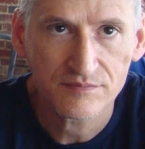Postcolonial Thoughts: Liz Linden: I wasn’t lying; you didn’t ask the correct questions. January 9 – March 12, 2014
by Christopher Hutchinson
“Liz Linden presents viewers with simple, straightforward imagery that unfolds into multiple, often contradictory readings of everyday objects. Over the past seven years Linden has created striking readings of images from The New York Times in her Cartoons (2006-2013) by enlarging and re-captioning selected photographs with text from the articles they illustrate: drawing attention to commentary in the article that broadens the meaning of the image.”
http://www.hfgallery.org/exhibitions.html

Liz Linden
Cartoon (04/09/06, from text by Anthony Tommasini, photo by Stephen Crowley), 2006
Archival pigment print on plexi mount
13.25” x 9.25” http://www.lizlinden.com/Cartoons.html
Semiotics & Pop
se·mi·ot·ics
n. (used with a sing. verb)
The theory and study of signs and symbols, especially as elements of language or other systems of communication, and comprising semantics, syntactics, and pragmatics.
http://www.thefreedictionary.com/semiotics
Linden’s artist talk at the Hagedorn foundation Gallery on January 9, 2013 was full of the artspeak terminology, especially that of semiotics, to explain and validiate her work. While Linden rationalized her work behind an academic vocabulary, upon examining the work itself, the context of semiotics is not quite accurate.What we have here is a literal definition of theory projected as art. Does this literal definition art qualify as art or artifact?
There is a common misconception of the definition of conceptual art, where one thinks that by executing a specific concept one has achieved conceptual praxis. This is not conceptual art; rather it is an illustration of a narrative. True conceptual art requires no physical making; it’s not interested in illustrations. In conceptual art the idea or concept is the most important aspect of the work. “When an artist uses a conceptual form of art, it means that all of the planning and decisions are made beforehand and the execution is a perfunctory affair. The idea becomes a machine that makes the art. This kind of art is not theoretical or illustrative of theories; it is intuitive …”-Sol Lewitt http://www.tufts.edu/programs/mma/fah188/sol_lewitt/paragraphs%20on%20conceptual%20art.htm

Joseph Kosuth. 1965. “Box, Cube, Empty, Clear, Glass – A Description
http://nsmn1.uh.edu/dgraur/Research.html
Linden claims the use of the random text already present in the newspaper juxtaposed beside the image printed creates the system necessary for the recognition of semiotics at work. Juxtaposing the Image and Text, only allows for one possible conclusion. The issue present in Linden’s Cartoons is the iconography present in its illustration of concept. Pop would be a more accurate term for Linden’s work. There was a familiarity with her Cartoons that brought to mind Warhol’s disaster series. Warhol did not use art speak to elevate Pop art to become more than what it was, 15 minutes only to be easily digested then forgotten.

Andy Warhol, “A boy for Meg,” 1962
http://gloriajoh.wordpress.com/tour/
Pop & Authenticity
“In the suite of collaged images, exotic domestic (2013), Linden resituates photographs of archetypal houseplants culled from the pages of interior design and lifestyle magazines in groups on blank pages to create surprising and quirky relationships through the plants anthropomorphic abstractions. These houseplants are the cornerstone of Linden’s third body of work in the exhibition—a hypothetical installation for which she will place a live and artificial Phalaenopsis orchid side by side for the duration of the exhibition. With this coupling Linden presents a compelling tautology that presses on questions of representation, signification, and what the artist calls the plant’s “oxymoronic status as minimalist decoration.” These works shed light on the social and political context we consciously or unconsciously bring to our perception of images and objects, challenging the received epistemology and learned affective responses ubiquitous in contemporary western culture.” http://www.hfgallery.org/exhibitions.html

Liz Linden. exotic domestic no. 1
Paper on denril
17”x14″
http://www.lizlinden.com/exotic_domestic.html
Linden led a discourse on the strange habits of humans that bring exotic plants into their homes and how in catalogues the only objects that are not for sale are the plants. Of Linden’s exotic domestic series (not pictured) the most interesting was the Orchid sculptures exhibited side by side on two pedestals. One orchid was real and the other fake.
The viewer was asked to question, which was the authentic? One of the main components of Pop art was to purposely challenge the value of authentic art, to use mass media production as the cheapest way to level the all that the art world values. Linden’s work repeats these same dated goals, which would not be a problem if these works were presented as artifacts. Does Linden’s exotic domestic orchid challenge authenticity more successfully than Warhol’s brillo boxes?
The values of artifacts are judged based on the civilization present when created. Roman sculpture considered less in comparison to Greece. Linden’s artifacts do not succeed in contributing a new dialogue Pop, much less semiotics.

Andy Warhol,
A brillo box from the Moderna Museet
http://www.theartnewspaper.com/articles/Warhol+Brillo+boxes+downgraded+to+%E2%80%9Ccopies%E2%80%9D/21573
 Christopher Hutchinson is an Assistant Professor of Art at Atlanta Metropolitan State College and Archetype Art Gallery Owner in Atlanta, Ga. He received his Master of Fine Arts Degree in Painting from Savannah College of art & Design, Atlanta and his Bachelor of Arts Degree from the University of Alabama in Huntsville, Alabama. He lived in Alabama for 10 years before moving to Atlanta in 2008.
Christopher Hutchinson is an Assistant Professor of Art at Atlanta Metropolitan State College and Archetype Art Gallery Owner in Atlanta, Ga. He received his Master of Fine Arts Degree in Painting from Savannah College of art & Design, Atlanta and his Bachelor of Arts Degree from the University of Alabama in Huntsville, Alabama. He lived in Alabama for 10 years before moving to Atlanta in 2008.
Learn more about Christopher and his work at Black Flight 144.
























